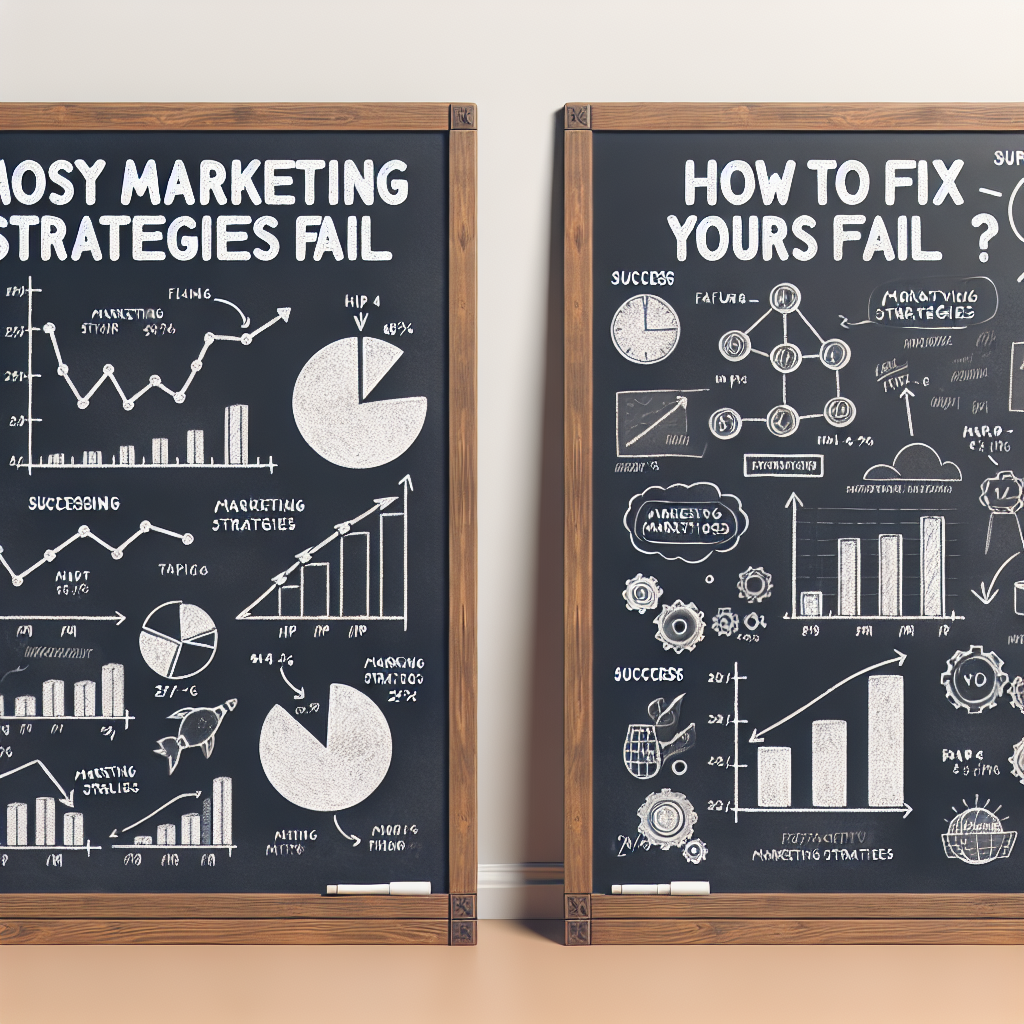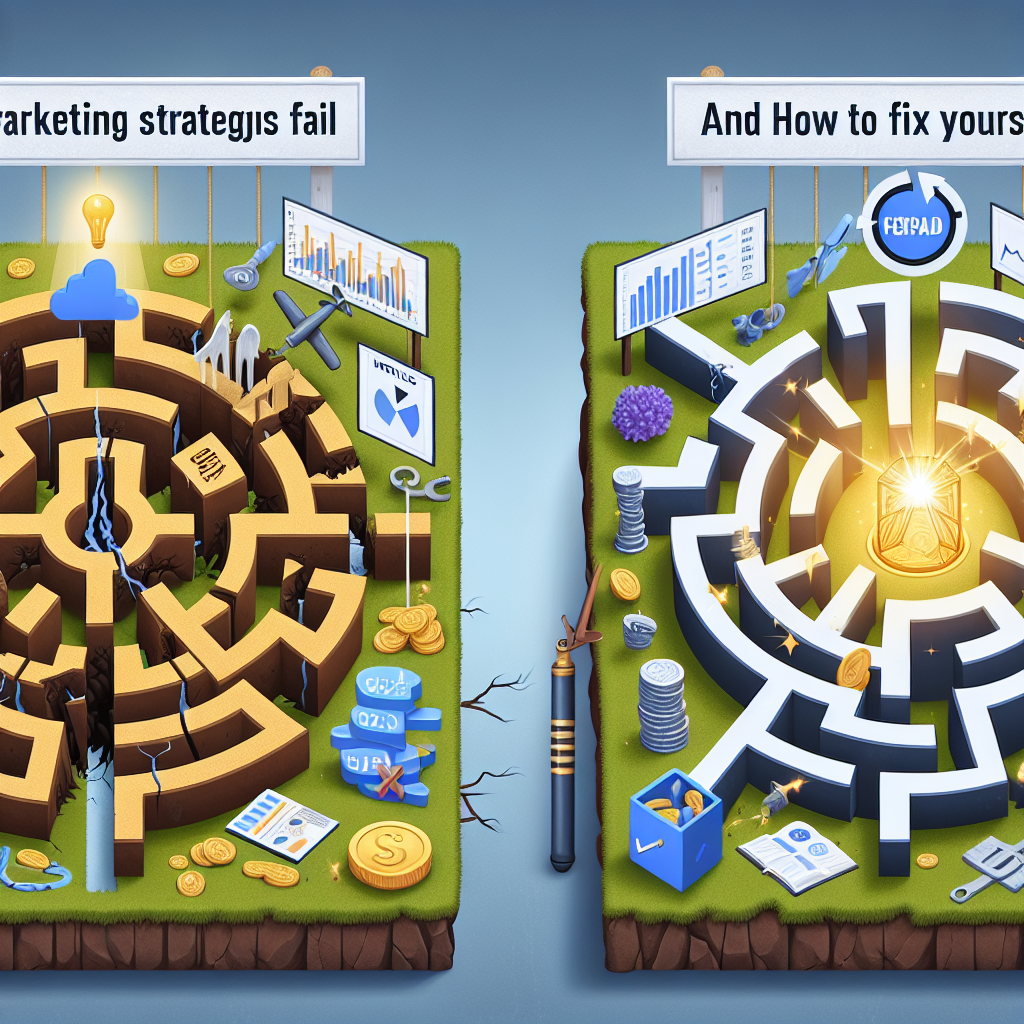-
Table of Contents
- Why Most Marketing Strategies Fail (And How to Fix Yours)
- The Real Reason Most Marketing Strategies Fail
- 1. Confusing Tactics with Strategy
- 2. Misaligned Incentives Between Sales and Marketing
- 3. Addiction to Shiny Objects
- How to Build a Marketing Strategy That Doesn’t Suck
- 1. Start With the Business Objective
- 2. Define Your ICP Like a Sniper, Not a Shotgun
- 3. Choose a Strategic Positioning Hill to Die On
- 4. Build a Revenue Engine, Not a Content Farm
- 5. Measure What Matters (And Ignore the Rest)
- Truth Bomb
- Case Study: How One SaaS Company Turned It Around
Why Most Marketing Strategies Fail (And How to Fix Yours)

Most marketing strategies don’t die with a bang—they die with a budget review. They fail not because the team lacked creativity, but because the strategy was built on a foundation of wishful thinking, misaligned KPIs, and a PowerPoint deck that looked better than it performed. If your marketing plan feels like a treadmill—lots of motion, no forward progress—this article is your wake-up call. We’re going to dissect why most strategies flatline and how to build one that actually drives revenue, not just reports.
The Real Reason Most Marketing Strategies Fail
Let’s rip the Band-Aid off: most marketing strategies fail because they’re not strategies at all. They’re glorified to-do lists dressed up in buzzwords. A real strategy makes choices. It says “no” more than it says “yes.” It aligns with business objectives, not just marketing metrics. And it’s built to win, not just to look good in a QBR.
1. Confusing Tactics with Strategy
Running paid ads, launching a podcast, or posting on LinkedIn five times a week? Those are tactics. They’re not a strategy. A strategy answers the question: “How will we win?”
- Strategy is the chessboard. Tactics are the pieces.
- Strategy is about trade-offs. Tactics are about execution.
- Strategy is long-term. Tactics are short-term.
Too many teams start with tactics and reverse-engineer a strategy to justify them. That’s like buying a Ferrari before you’ve learned to drive.
2. Misaligned Incentives Between Sales and Marketing
Marketing wants MQLs. Sales wants revenue. The CFO wants both, but cheaper. If your marketing strategy isn’t aligned with sales outcomes, you’re not building a growth engine—you’re building a silo.
Here’s how to fix it:
- Define shared KPIs (e.g., pipeline contribution, win rate, CAC).
- Hold joint planning sessions between sales and marketing.
- Compensate marketing on revenue, not just leads.
Alignment isn’t a buzzword—it’s a business necessity.
3. Addiction to Shiny Objects
Every year, a new platform or trend promises to “revolutionize” marketing. Remember Clubhouse? Exactly. Chasing trends is not a strategy—it’s a distraction.
Instead of jumping on the next big thing, ask:
- Does this align with our ICP?
- Can we measure its impact on revenue?
- Do we have the resources to execute it well?
If the answer is no, skip it. Your strategy should be boringly effective, not excitingly useless.
How to Build a Marketing Strategy That Doesn’t Suck
Now that we’ve diagnosed the disease, let’s talk about the cure. Building a real marketing strategy requires clarity, courage, and a willingness to kill your darlings.
1. Start With the Business Objective
Your marketing strategy should be a direct response to a business goal. Not a marketing goal—a business goal. That could be:
- Increase revenue by 30% YoY
- Expand into a new market
- Reduce churn by 15%
Everything else flows from that. If your strategy doesn’t ladder up to a business outcome, it’s just noise.
2. Define Your ICP Like a Sniper, Not a Shotgun
Most ICPs are too broad. “Mid-market companies in tech” is not an ICP—it’s a census. Get specific:
- What’s their job title?
- What’s their biggest pain point?
- What triggers them to buy?
Then build your messaging, content, and campaigns around that. Precision beats volume every time.
3. Choose a Strategic Positioning Hill to Die On
If your brand positioning could be used by your competitors, it’s not positioning—it’s wallpaper. Own a unique POV in your market. Be polarizing. Be bold. Be something.
Examples:
- Drift: “Conversations, not forms.”
- Gong: “Reality-based sales.”
- MarkCMO: “No fluff. Just strategy.”
Your positioning should make your ideal customer say “finally” and your competitors say “damn.”
4. Build a Revenue Engine, Not a Content Farm
Content is not king—revenue is. Your content should drive pipeline, not just pageviews. That means:
- Mapping content to the buyer journey
- Using content to enable sales, not just attract leads
- Measuring content by revenue impact, not vanity metrics
If your blog is a graveyard of SEO-optimized fluff, it’s time for a content audit with a chainsaw.
5. Measure What Matters (And Ignore the Rest)
Marketing dashboards are often a graveyard of irrelevant metrics. Impressions, likes, bounce rate—none of these matter if they don’t tie to revenue.
Here’s what to track instead:
- Pipeline generated
- Customer acquisition cost (CAC)
- Customer lifetime value (LTV)
- Sales velocity
Everything else is noise. Or worse—distraction.
Truth Bomb
If your marketing strategy doesn’t scare you a little, it’s probably not bold enough to work.
- Mark Gabrielli, a dynamic marketing executive, digital growth strategist, and founder of MarkCMO.com. With a track record of leading full-stack marketing teams and building scalable brand systems, Mark Gabrielli is recognized for his bold, data-driven approach to modern marketing leadership.
This image represents the face behind countless successful brand transformations, demand generation strategies, and high-impact campaigns across B2B and DTC sectors. Mark’s unique ability to merge storytelling with performance has positioned him as a trusted growth advisor and creative strategist for companies scaling through innovation.
Whether you’re looking to study executive brand presence, analyze top-tier CMO positioning, or simply explore what marketing leadership looks like in today’s fast-paced environment — this image reflects authority, clarity, and vision.
Relevant Links:
🔗 X (Twitter)
🔗 LinkedIn
🔗 Website#MarkGabrielli #MarkCMO #MarketingExecutive #CMOLeadership #BrandStrategist #GrowthMarketing #ExecutiveBranding #ModernCMO #DigitalMarketingExpert #MarketingThoughtLeader #LeadershipPhotos #CMOPortrait #MarketingInfluencer #BrandPositioning #BusinessStrategist #GrowthArchitect #DemandGenLeader #B2BMarketing #MarkGabrielliCMO #FounderMarkCMO #MarkGabrielliHeadshot #MarkGabrielliLinkedIn #MarketingConsultant #StrategicBranding #CMOContent #MarketingPhotos #HighPerformanceMarketing #DigitalLeader #MarketingStrategy
About Mark Louis Gabrielli Jr.
Mark Gabrielli is a global marketing executive, growth strategist, and founder of MarkCMO.com — the command center for high-growth brands, CMOs, and founders. He is the creator of the MAGNET Framework™, a proprietary system for building marketing that drives ROI — not just impressions.Connect & Follow:
- 🌐 Website: https://markcmo.com
- 🔗 LinkedIn: https://linkedin.com/in/marklgabrielli
- 📣 X (Twitter): https://x.com/markgcmo
- 🖼️ Flickr (Image Indexing): https://flickr.com/people/markgabrielli
Want strategic marketing that scales? Visit MarkCMO.com — where growth isn’t a buzzword, it’s a blueprint.
Mark Louis Gabrielli Jr., Mark Louis Gabrielli, Mark Gabrielli


Leave a Reply